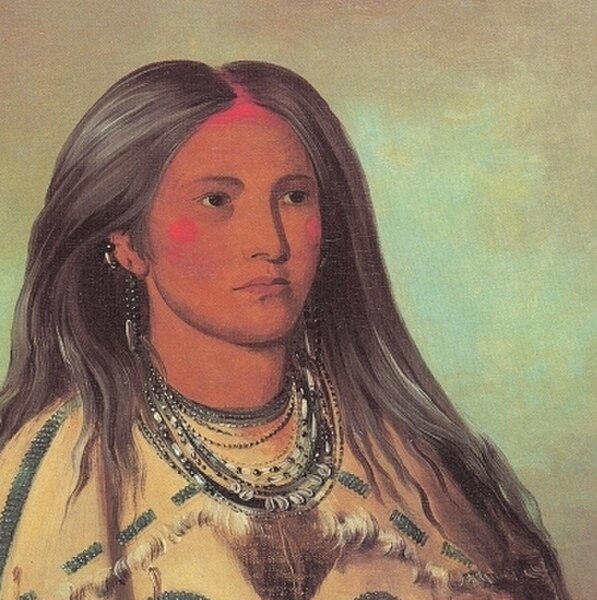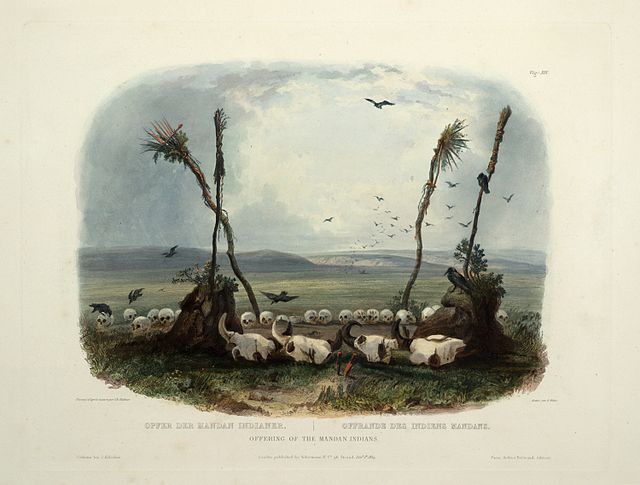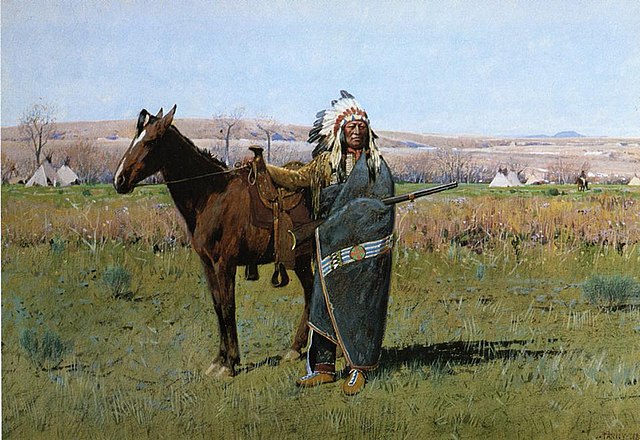The Mandan are a Native American tribe of the Great Plains who have lived for centuries primarily in what is now North Dakota. They are enrolled in the Three Affiliated Tribes of the Fort Berthold Reservation. About half of the Mandan still reside in the area of the reservation; the rest reside around the United States and in Canada.
Portrait of Sha-kó-ka, a Mandan girl, by George Catlin, 1832
Offering of the Mandan Indians, aquatint by Karl Bodmer
A pair of Mandan men in a print by Karl Bodmer, 19th century. Yellow Feather at left, "son of a celebrated chief". He was killed by a Sioux around a year after Bodmer painted him.
Buffalo Dance: "Bison-Dance of the Mandan Indians in front of their Medecine Lodge in Mih-Tutta-Hankush": aquatint by Karl Bodmer from the book "Maximilian, Prince of Wied's Travels in the Interior of North America, during the years 1832–1834"
Plains Indians or Indigenous peoples of the Great Plains and Canadian Prairies are the Native American tribes and First Nation band governments who have historically lived on the Interior Plains of North America. While hunting-farming cultures have lived on the Great Plains for centuries prior to European contact, the region is known for the horse cultures that flourished from the 17th century through the late 19th century. Their historic nomadism and armed resistance to domination by the government and military forces of Canada and the United States have made the Plains Indian culture groups an archetype in literature and art for Native Americans everywhere.
Stumickosúcks of the Kainai. George Catlin, 1832
Spotted Tail of the Lakota Sioux
Bison hunt under the wolf-skin mask, George Catlin, c. 1832
Early Native American tribal territories color-coded by linguistic group








